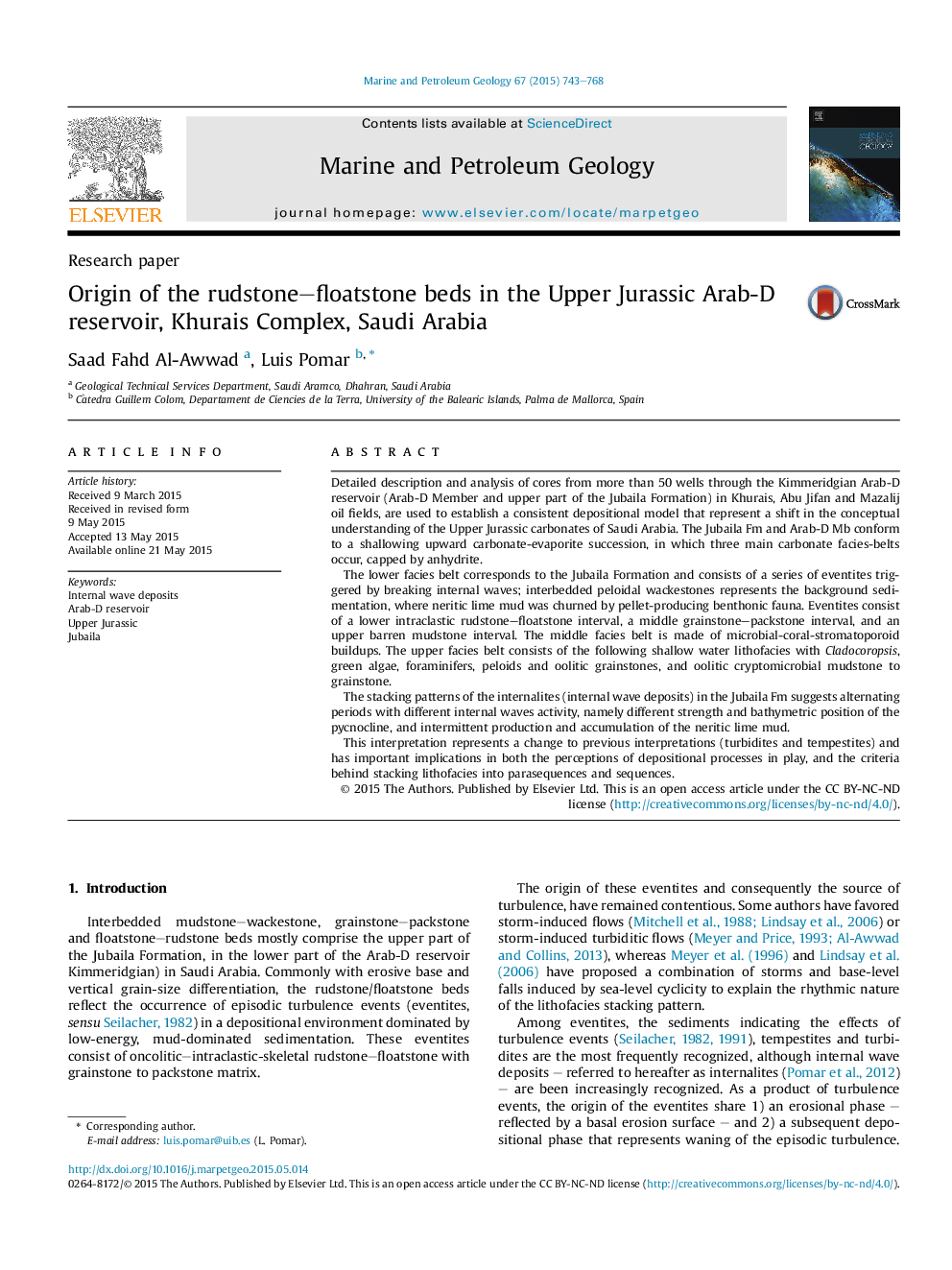| کد مقاله | کد نشریه | سال انتشار | مقاله انگلیسی | نسخه تمام متن |
|---|---|---|---|---|
| 6434980 | 1637159 | 2015 | 26 صفحه PDF | دانلود رایگان |

- New depositional model for the Arab-D reservoir in Khurais Complex, Saudi Arabia.
- Internal waves dominated outer ramp deposits in the oligo-aphotic zone.
- Bioturbated peloidal wackestone was the background sedimentation in the outer ramp.
- Meso-oligophotic mid ramp consists of microbial-stromatoporoid buildups.
- Diverse high- and low energy facies characterizes the shallow-water inner ramp.
Detailed description and analysis of cores from more than 50 wells through the Kimmeridgian Arab-D reservoir (Arab-D Member and upper part of the Jubaila Formation) in Khurais, Abu Jifan and Mazalij oil fields, are used to establish a consistent depositional model that represent a shift in the conceptual understanding of the Upper Jurassic carbonates of Saudi Arabia. The Jubaila Fm and Arab-D Mb conform to a shallowing upward carbonate-evaporite succession, in which three main carbonate facies-belts occur, capped by anhydrite.The lower facies belt corresponds to the Jubaila Formation and consists of a series of eventites triggered by breaking internal waves; interbedded peloidal wackestones represents the background sedimentation, where neritic lime mud was churned by pellet-producing benthonic fauna. Eventites consist of a lower intraclastic rudstone-floatstone interval, a middle grainstone-packstone interval, and an upper barren mudstone interval. The middle facies belt is made of microbial-coral-stromatoporoid buildups. The upper facies belt consists of the following shallow water lithofacies with Cladocoropsis, green algae, foraminifers, peloids and oolitic grainstones, and oolitic cryptomicrobial mudstone to grainstone.The stacking patterns of the internalites (internal wave deposits) in the Jubaila Fm suggests alternating periods with different internal waves activity, namely different strength and bathymetric position of the pycnocline, and intermittent production and accumulation of the neritic lime mud.This interpretation represents a change to previous interpretations (turbidites and tempestites) and has important implications in both the perceptions of depositional processes in play, and the criteria behind stacking lithofacies into parasequences and sequences.
Journal: Marine and Petroleum Geology - Volume 67, November 2015, Pages 743-768